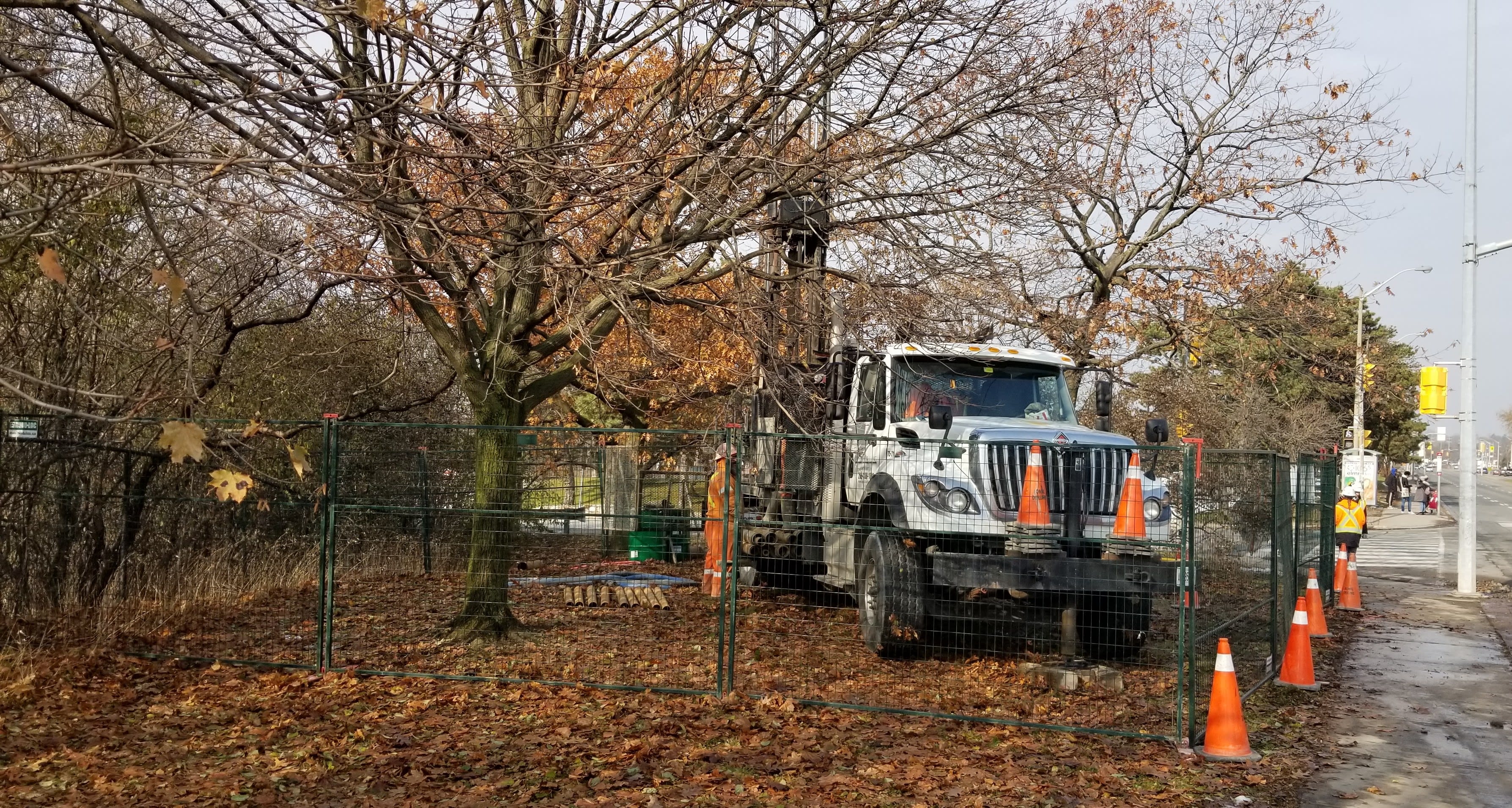A tunnel into subterranean GTA history, centuries in the making
Field work for four major subway projects is underway across the city.
Jan 20, 2020
To build a modern subway route, sometimes you have to dig back to the Ice Age.
Field work for four major subway projects – the Ontario Line, the Yonge North Subway Extension, the Eglinton Crosstown West Extension and the Scarborough Subway Extension – is underway across the city with workers tapping into a world deep below Toronto.
This geotechnical exploration work will give subway planners insight into the ground they’ll have to tunnel through, especially in areas that were shaped thousands of years ago by a giant glacier. Work crews test underground conditions by drilling into the ground to collect samples – information gathering that is essential to the design of subway structures and tunnels.
Geotechnical drilling for the new Ontario Line at Don Mills Road. (Metrolinx photo)
Mobile, truck-mounted drills with hollow shafts reach deep into the ground to pull out samples, called cores. These are used to determine the strength and other characteristics of the soil or rock, as well as the amount and location of groundwater.
Once collected, the samples are transferred to a laboratory for testing to collect information about the soil and rock structure.
“We are doing our homework in order to best understand and communicate the complexities hidden deep beneath our feet,” said Malcolm MacKay, program sponsor for Ontario Line at Metrolinx.
Information from this geotechnical exploration is used to make critical decisions like what kind of tunnel boring machine to use – different models work better in softer or harder soil and rock – and how to design and construct the massive concrete structures that will be built underground for the subway stations, as well as foundations for the above ground infrastructure.
Along the Ontario Line, digging will typically go down 20 to 35 metres. In downtown sections, tunnels will be built in a layer of shale rock, which presents a unique challenge for subway construction, based on the city’s geologic history.
About 18,000 years ago, today’s Toronto was below a massive glacier that was more than a mile thick.
That glacier scraped the bedrock clean, exposing the shale to freezing and thawing weather cycles that deteriorated a layer of several metres on top.
Core samples, like this one, are used to help subway experts learn more about the soil and rock structure in which new and expanded lines will be built. (Metrolinx photo)
“For thousands of years, the weight of the glacier compressed everything below it and locked this energy into the rock,” MacKay explained. “Like a compressed sponge released slowly, when the glaciers melted and the earth was unloaded, the entire area rebounded upward.
“Today, when we tunnel, dig or expose the shale, there is potential for this rock to further expand, or creep over time.”
The expanding rock can press against and overload tunnels and other structures that are built for the subway. It’s important for geologists and engineers to understand how much, and when, this expansion will occur.
There are important differences in the rock from place to place.
“As you go further north, beyond Gerrard Street East, you don’t necessarily have to go as deep because the shale is deeper and you are in soil entirely,” MacKay said.
A crew working in Seton Park with the Overlea Boulevard bridge in the background. (Metrolinx photo)
As the rigs test different locations, they will typically drill down below roads or land immediately adjacent to them. MacKay points out that Metrolinx is doing everything possible to reduce the inconvenience.
“Toronto is a busy city and we want to minimize our impacts on traffic and communities so we aim to get in and out as quickly as possible,” he said.
For more information on projects being built across the region, please click here.
And to get the latest updates for Ontario Line, including upcoming open houses, just go here.
